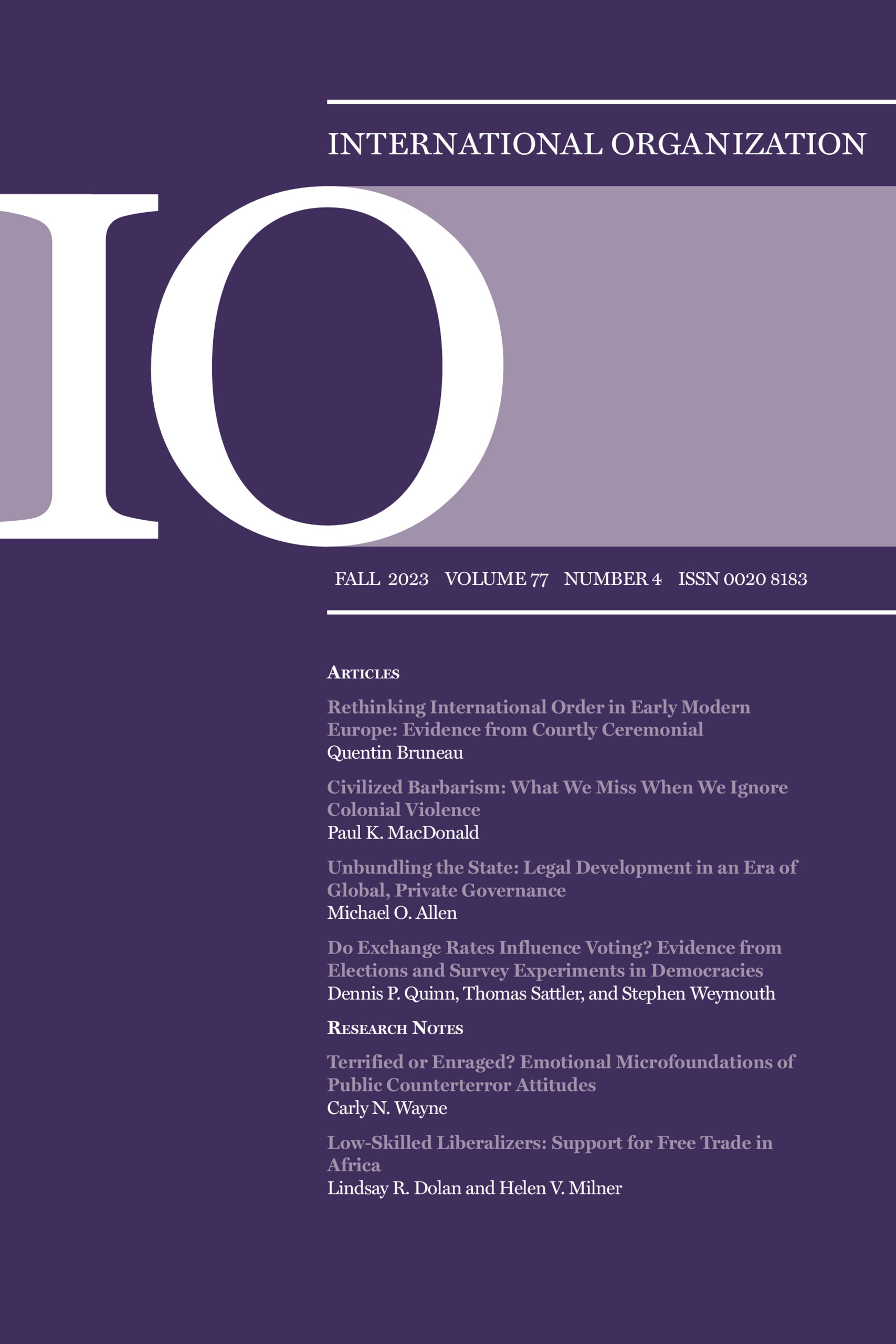黄金的漫长黄昏:一种关键的实践如何在货币组合中持续存在
IF 8.2
1区 社会学
Q1 INTERNATIONAL RELATIONS
引用次数: 0
摘要
摘要为什么自经典金本位制度崩溃以来,尽管国际货币关系发生了重大变化,黄金仍然是一种重要的储备资产?IPE理论对这个问题几乎没有什么可说的。国际货币关系的传统描述描绘了一系列离散的货币制度,其特征是特定的权力结构或主导思想。为了解释黄金的持续重要性,我们借鉴了社会心理学和新唯物主义理论的见解。我们认为,国际货币关系应该被理解为物质文物、制度、思想和实践的复杂集合。在其历史的大部分时间里,这种组合都围绕着将货币与黄金联系起来的关键实践。决策者所经历的黄金的中心地位产生了重要影响。利用档案和其他证据,我们记录了从1944年布雷顿森林会议到20世纪70年代中期向浮动汇率过渡的这些影响;大多数IPE学者低估了黄金在这一时期的作用。权力关系和经济思想显然很重要,但它们对根本性的发展几乎没有贡献:不情愿地接受货币支持的限制的漫长过程,以及国际货币关系中黄金的逐渐且仍在进行的分散化。本文章由计算机程序翻译,如有差异,请以英文原文为准。
The Long Twilight of Gold: How a Pivotal Practice Persisted in the Assemblage of Money
Abstract Why has gold persisted as a significant reserve asset despite momentous changes in international monetary relations since the collapse of the classical gold standard? IPE theories have little to say about this question. Conventional accounts of international monetary relations depict a succession of discrete monetary regimes characterized by specific power structures or dominant ideas. To explain the continuous importance of gold, we draw on insights from social psychology and new materialist theories. We argue that international monetary relations should be understood as a complex assemblage of material artifacts, institutions, ideas, and practices. For much of its history, this assemblage revolved around the pivotal practice of referencing money to gold. The centrality of gold as experienced by policymakers had important effects. Using archival and other evidence, we document these effects from the 1944 Bretton Woods conference through the transition to floating exchange rates in the mid-1970s; most IPE scholars underestimate the role of gold during this period. Power relations and economic ideas were obviously important, but they contributed little to a fundamental development: the long process of reluctantly coming to terms with the limitations of specie-backed currency, and the progressive and still ongoing decentering of gold in international monetary relations.
求助全文
通过发布文献求助,成功后即可免费获取论文全文。
去求助
来源期刊

International Organization
Multiple-
CiteScore
14.50
自引率
1.30%
发文量
25
期刊介绍:
International Organization (IO) is a prominent peer-reviewed journal that comprehensively covers the field of international affairs. Its subject areas encompass foreign policies, international relations, political economy, security policies, environmental disputes, regional integration, alliance patterns, conflict resolution, economic development, and international capital movements. Continuously ranked among the top journals in the field, IO does not publish book reviews but instead features high-quality review essays that survey new developments, synthesize important ideas, and address key issues for future scholarship.
 求助内容:
求助内容: 应助结果提醒方式:
应助结果提醒方式:


